General features
Analysis
Elastoplastic Analysis
CESAR implements several calculation algorithms so that non-linear analysis can be carried out in an efficient and robust manner.
CESAR comes with both simple and advanced constitutive models for soil and rock including Mohr-Coulomb, Hoek-Brown and Hardening Soil Model. User will also take high benefice from the constitutive laws lab, allowing an advanced soil behaviour modelling.
Other materials like concrete or steel are also embedded.
Groundwater flow
CESAR processes seepage analysis in saturated or non-saturated porous media. The diffusion problems are analyzed under steady- or transient state.
The results can be integrated in the total/effective stress problems. This sequential analysis is fitted for common models.
Safety factor and Strength Reduction methods
The results of a Finite Elements analysis (stresses, displacements fields) reflect the mechanical equilibrium of the model. However limit state or safety-factor analysis is often required for the design of geostructures. CESAR integrates:
- the strength reduction method, also named “c-phi reduction”. It provides a safety factor against collapse,
- a limit analysis procedure by piloting the loading sets. It provides a safety factor against bearing capacity.
Consolidation
The consolidation analysis is used to simulate the phenomenon of how excess pore water pressure changes with the changes in load/boundary conditions.
In CESAR, this full coupled stress-flow analysis integrates the behaviour of non-linear materials constitutive models. This process provides more accurate results than the same analysis with elastic materials or uncoupled assumptions.
Dynamics
CESAR computes, by means of direct integration, the response of a structure submitted to a dynamic load; it enables proceeding with a step-by-step resolution of the dynamic equilibrium equation.
Another methods consists of computing, by means of modal superposition (eigenvalues seeking is included), the response of a structure submitted to a dynamic load. Two types of problems have been considered herein:
- estimation of the maximum response by means of spectral computation (an SRSS- or CQC-type superposition),
- computation of the full response.
Soil-structure interaction
The process in which the response of the soil influences the motion of the structure and the motion of the structure influences the response of the soil is termed as soil-structure interaction (SSI).
CESAR integrates Finite Elements families for a correct modelling of this SSI:
- Beam, truss, shell, plates, spring elements, damping elements… for the structure modelling.
- Volume elements, spring elements, damping elements… for the soil modelling.
More, contact elements and algorithms can be associated to the shell, beam and volumes interfaces so that debonding, slipping or simple friction is correctly modeled.
Heat
Heat analysis is useful for the simulation of several phenomena in Civil Engineering: fire in tunnels, temperature elevation in a road pavement… CESAR is fitted to model several boundary conditions and heat transfers.
Easily coupled with the mechanical algorithms, the temperature gradients, results of the heat analysis, provide correct modelling of the induced stress fields.
Elastoplastic Analysis
CESAR implements several calculation algorithms so that non-linear analysis can be carried out in an efficient and robust manner.CESAR comes with both simple and advanced constitutive models for soil and rock including Mohr-Coulomb, Hoek-Brown and Hardening Soil Model. User will also take high benefice from the constitutive laws lab, allowing an advanced soil behaviour modelling.
Other materials like concrete or steel are also embedded.
Groundwater flow
CESAR processes seepage analysis in saturated or non-saturated porous media. The diffusion problems are analyzed under steady- or transient state.The results can be integrated in the total/effective stress problems. This sequential analysis is fitted for common models.
Safety factor and Strength Reduction methods
The results of a Finite Elements analysis (stresses, displacements fields) reflect the mechanical equilibrium of the model. However limit state or safety-factor analysis is often required for the design of geostructures. CESAR integrates:- the strength reduction method, also named “c-phi reduction”. It provides a safety factor against collapse,
- a limit analysis procedure by piloting the loading sets. It provides a safety factor against bearing capacity.
Consolidation
The consolidation analysis is used to simulate the phenomenon of how excess pore water pressure changes with the changes in load/boundary conditions.In CESAR, this full coupled stress-flow analysis integrates the behaviour of non-linear materials constitutive models. This process provides more accurate results than the same analysis with elastic materials or uncoupled assumptions.
Dynamics
CESAR computes, by means of direct integration, the response of a structure submitted to a dynamic load; it enables proceeding with a step-by-step resolution of the dynamic equilibrium equation.Another methods consists of computing, by means of modal superposition (eigenvalues seeking is included), the response of a structure submitted to a dynamic load. Two types of problems have been considered herein:
- estimation of the maximum response by means of spectral computation (an SRSS- or CQC-type superposition),
- computation of the full response.
Soil-structure interaction
The process in which the response of the soil influences the motion of the structure and the motion of the structure influences the response of the soil is termed as soil-structure interaction (SSI).CESAR integrates Finite Elements families for a correct modelling of this SSI:
- Beam, truss, shell, plates, spring elements, damping elements… for the structure modelling.
- Volume elements, spring elements, damping elements… for the soil modelling.
More, contact elements and algorithms can be associated to the shell, beam and volumes interfaces so that debonding, slipping or simple friction is correctly modeled.
Heat
Heat analysis is useful for the simulation of several phenomena in Civil Engineering: fire in tunnels, temperature elevation in a road pavement… CESAR is fitted to model several boundary conditions and heat transfers.Easily coupled with the mechanical algorithms, the temperature gradients, results of the heat analysis, provide correct modelling of the induced stress fields.
Constitutive models
A rich integrated database
Elasticity
- Homogeneous isotropic linear elasticity
- Homogeneous orthotropic linear elasticity
- Isotropic linear elasticity with E and φ varying linearly with depth
- Isotropic linear elasticity with E = f(zφ)
- Non-linear elasticity of the Hardening Soil Model
- Non-linear elasticity of Cam-Clay
- Non-linear elasticity of Duncan
- Non-linear elasticity of Fahey-Carter
Plasticity criteria for soils
- Mohr-Coulomb
- Mohr Coulomb criterion with c et φ varying linearly with depth (c = f(z) ; φ= f(z))
- Hardening Soil Model
- Cam-Clay (modified)
- Drucker-Prager
- Prévost–Hoëg
- Hoek-Brown (1997)
- Tresca
- Oriented criterion
- HiSS (Shao & Desai)
- S-Clay 1
- Vermeer
- Nova
- Mélanie.
Plasticity criteria for other materials
- Von Mises
- Parabolic criterion
- Hill-Lourenço
- Willam Warnke
A rich integrated database
Elasticity
- Homogeneous isotropic linear elasticity
- Homogeneous orthotropic linear elasticity
- Isotropic linear elasticity with E and φ varying linearly with depth
- Isotropic linear elasticity with E = f(zφ)
- Non-linear elasticity of the Hardening Soil Model
- Non-linear elasticity of Cam-Clay
- Non-linear elasticity of Duncan
- Non-linear elasticity of Fahey-Carter
Plasticity criteria for soils
- Mohr-Coulomb
- Mohr Coulomb criterion with c et φ varying linearly with depth (c = f(z) ; φ= f(z))
- Hardening Soil Model
- Cam-Clay (modified)
- Drucker-Prager
- Prévost–Hoëg
- Hoek-Brown (1997)
- Tresca
- Oriented criterion
- HiSS (Shao & Desai)
- S-Clay 1
- Vermeer
- Nova
- Mélanie.
Plasticity criteria for other materials
- Von Mises
- Parabolic criterion
- Hill-Lourenço
- Willam Warnke
User-defined material laws
A numerical toolbox of constitutive models has been designed and integrated in the software CESAR-LCPC, proposing elastic laws, plasticity and hardening criteria. Thus adapted to the project context and geomaterials types, they show value added to geotechnical engineers for a better analysis of earthworks behaviour.
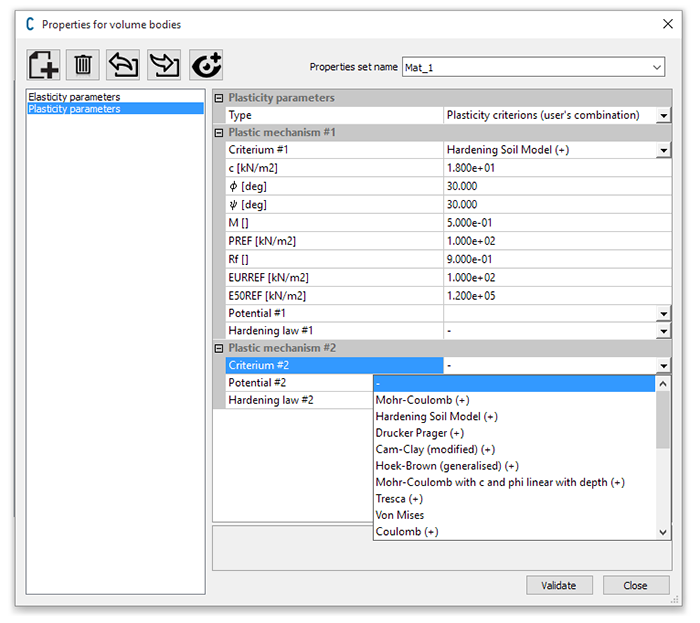
CAD tools & Workflow
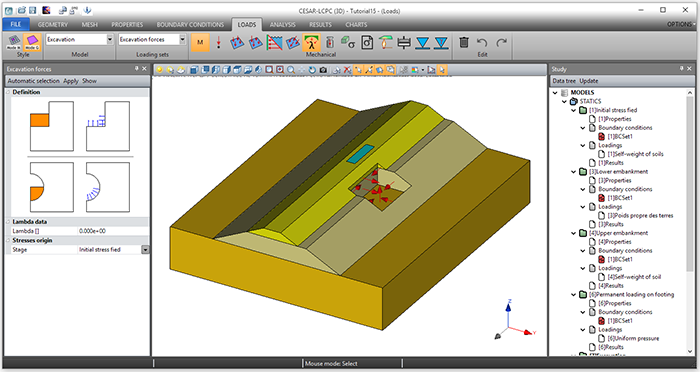
CESAR is equipped with a large set of CAD tools so that user feels comfortable as it is similar to his CAD software environment:
- Circles, lines, splines, NURBS, blocks.
- Imports: DXF, LANDXML, STEP.
- Intersections: volume/volume, volume/surface, surface/surface, edge/edge.
- Operations: translation, rotation, symmetry, extrusion.
Also, because several structures are suited for parametric design, we integrate assistance for the model generation, from geometry (tunnels as example) to results analysis. Our tools are based on XML files and PYTHON scripts.
The workflow of CESAR has been designed so that user will easily have an overview of the model status: geometry, mesh, material properties, boundary conditions and loading sets.
The “Tree view” window is the heart of the model. User will see here at once all the analysis carried on the model in the “Calculation tree”. He can also access and check the properties of the model in the “Data tree”.
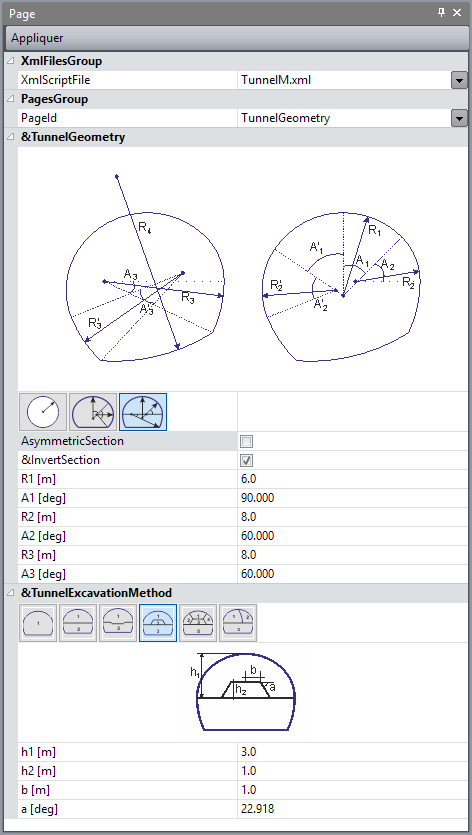

CESAR is equipped with a large set of CAD tools so that user feels comfortable as it is similar to his CAD software environment:
- Circles, lines, splines, NURBS, blocks.
- Imports: DXF, LANDXML, STEP.
- Intersections: volume/volume, volume/surface, surface/surface, edge/edge.
- Operations: translation, rotation, symmetry, extrusion.
The workflow of CESAR has been designed so that user will easily have an overview of the model status: geometry, mesh, material properties, boundary conditions and loading sets.
The “Tree view” window is the heart of the model. User will see here at once all the analysis carried on the model in the “Calculation tree”. He can also access and check the properties of the model in the “Data tree”.

Meshing tools
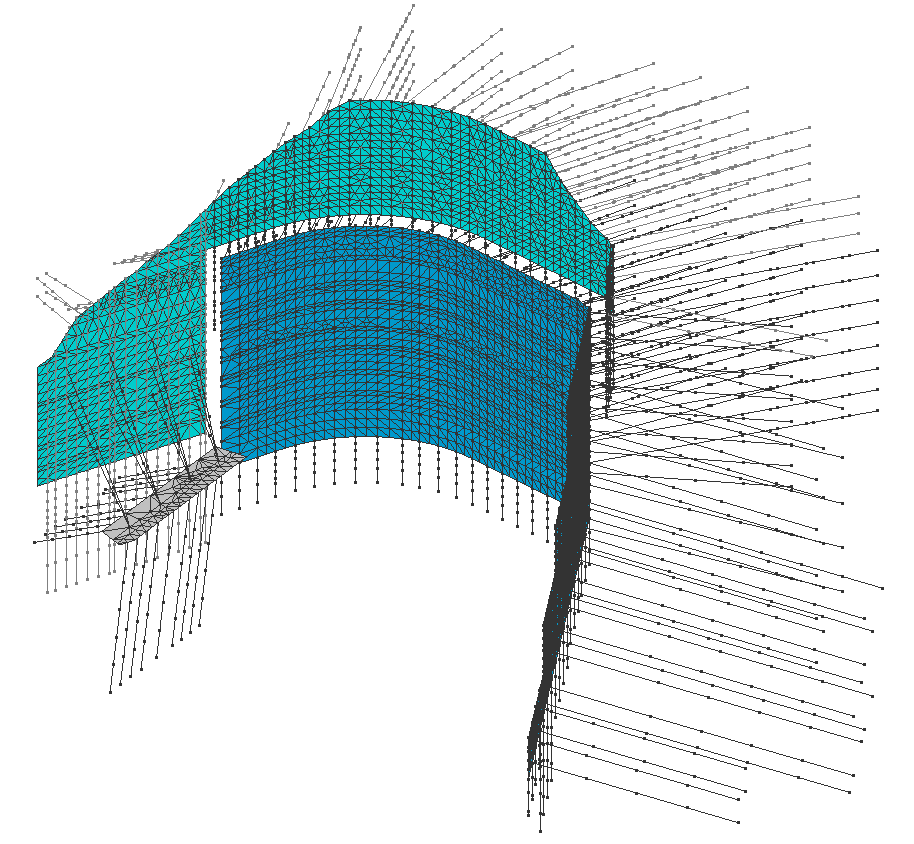
CESAR includes a wide set of efficient meshing procedures.
All the algorithms allow definition of mesh refinement by giving density of all the segments:
- Mesh of surface regions of plan, revolution or coons type;
- Regular volume elements mesh of hexahedron, pentahedron or tetrahedron type;
- Automatic volume mesh generation (Volumes are defined by their external surface and are filled of tetrahedrons);
- It is possible to extend the mesh by translation, rotations or symmetry.
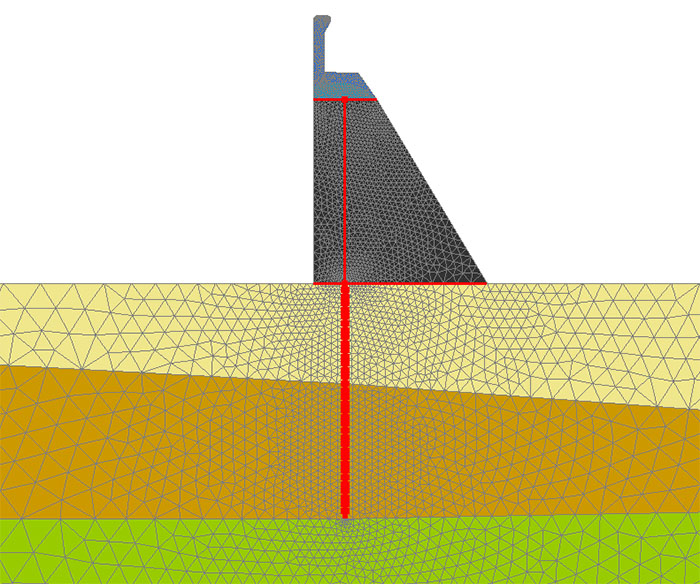
Finite Elements library
- Isoparametric displacement-type elements
- Tetrahedron. hexahedron, pentahedron…
- Beam elements
- Shell elements
- Contact elements
- Truss elements
- Spring elements
- Nodal special elements (heat transfer, damping...)
- Isoparametric diffusion-type elements
- Exchange elements
- Two-dimensional isoparametric elements with three degrees of freedom per node (two displacements, hydraulic load) for consolidation problems
- Isoparametric elements with five degrees of freedom per node (three displace¬ments, pore pressure, temperature) for thermomechanical problems in porous media.
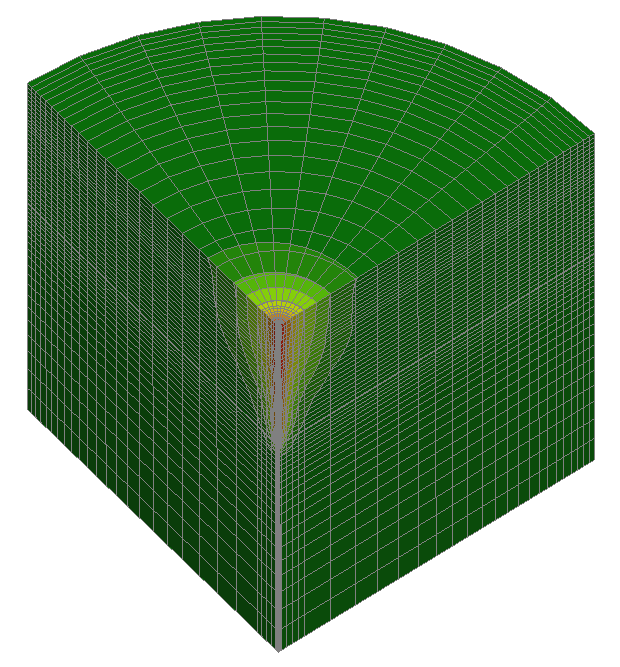

CESAR includes a wide set of efficient meshing procedures.
All the algorithms allow definition of mesh refinement by giving density of all the segments:- Mesh of surface regions of plan, revolution or coons type;
- Regular volume elements mesh of hexahedron, pentahedron or tetrahedron type;
- Automatic volume mesh generation (Volumes are defined by their external surface and are filled of tetrahedrons);
- It is possible to extend the mesh by translation, rotations or symmetry.

Finite Elements library
- Isoparametric displacement-type elements
- Tetrahedron. hexahedron, pentahedron…
- Beam elements
- Shell elements
- Contact elements
- Truss elements
- Spring elements
- Nodal special elements (heat transfer, damping...)
- Isoparametric diffusion-type elements
- Exchange elements
- Two-dimensional isoparametric elements with three degrees of freedom per node (two displacements, hydraulic load) for consolidation problems
- Isoparametric elements with five degrees of freedom per node (three displace¬ments, pore pressure, temperature) for thermomechanical problems in porous media.

+33 (0) 1 49 76 12 59
Contact us



